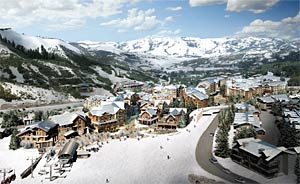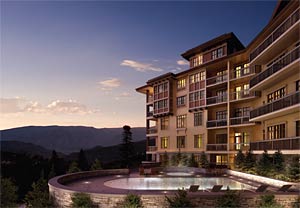It’s only natural for America’s ski community to embrace the environmental movement: a rise in average global temperatures could dwindle vital snowpack. Last year at least 61 ski resorts purchased wind and solar energy credits. Similarly, Jiminy Peak, in Massachusetts, became the first ski resort in the country to produce its own alternative energy, installing a 1.5-megawatt wind turbine that supplies one-third of its electricity.


Eco momentum has continued to build during the 2007–2008 ski season. In November, development company Related WestPac announced phase-one completion of a new Base Village in Snowmass Village, Colorado. All 19 buildings in the $1 billion undertaking will meet LEED’s basic certification standards; two signature components, the 236-unit Viceroy Resort Residences and the 30-unit Little Nell Residences, should achieve LEED Silver certification. The project also is the largest of its kind to apply for the LEED for Neighborhood Development pilot program. Related WestPac president Pat Smith calls the sustainability push “an opportunity and an obligation.”
The Base Village comprises an 80-acre greenfield parcel and will ultimately include 300 condominiums, 60,000 square feet of commercial space, an aquatic center, and hospitality. Peter Dominick, FAIA, whose firm 4240 Architecture is designing for the development along with Denniston International, says “We are striving to create a sophisticated rustic aesthetic, utilizing materials and design that can withstand the intense snowfall and sunlight that are staples of the Snowmass alpine environment.”
The million-plus square feet of new construction will be distributed in a pedestrian-friendly urban plan that features low- and mid-rise gable-topped buildings. Interiors will be equally pared down but lodge-like: conceptual renderings of Little Nell, for instance, show coffered ceilings and wrought-iron chandeliers, while birch-bark partitions and candle-filled hearths highlight the Viceroy’s public spaces.
A spokesperson for Related WestPac says that designing for LEED criteria “can be a bit of a challenge, especially in a climate that has complex water laws and local sources difficulties.” To hit those targets, micro-turbines will be installed, and geothermal heating is under consideration. Construction crews already have implemented green practices, limiting their vehicles’ idling time, carpooling to the job site, undertaking soil management, and using prefabricated parts in order to minimize trucking trips. The Snowmass Village Base Village is scheduled to be entirely complete in time for the 2012–2013 ski season.
See the related article below for a look at how architects are designing lodges for disabled skiers.




Post a comment to this article
Report Abusive Comment